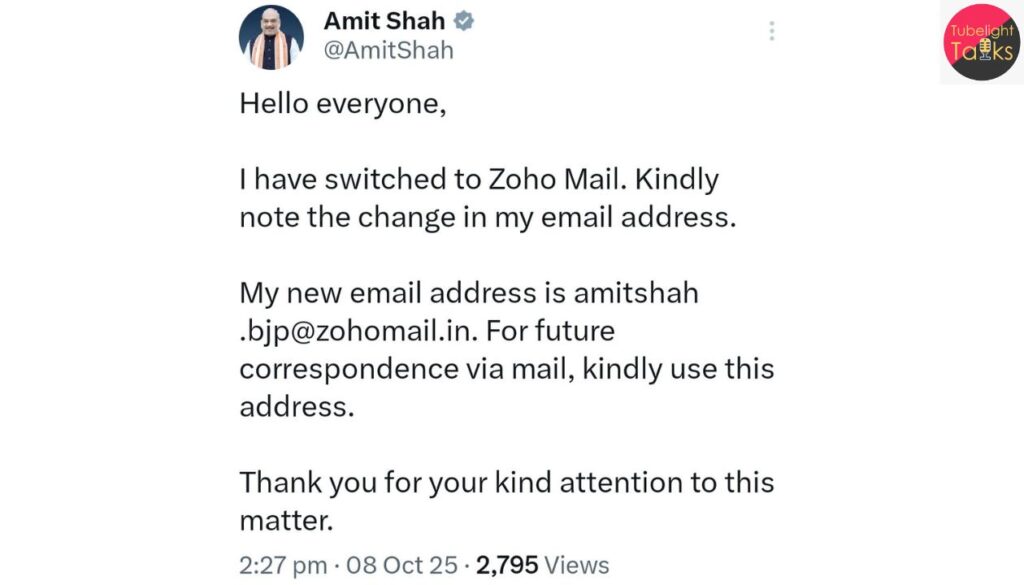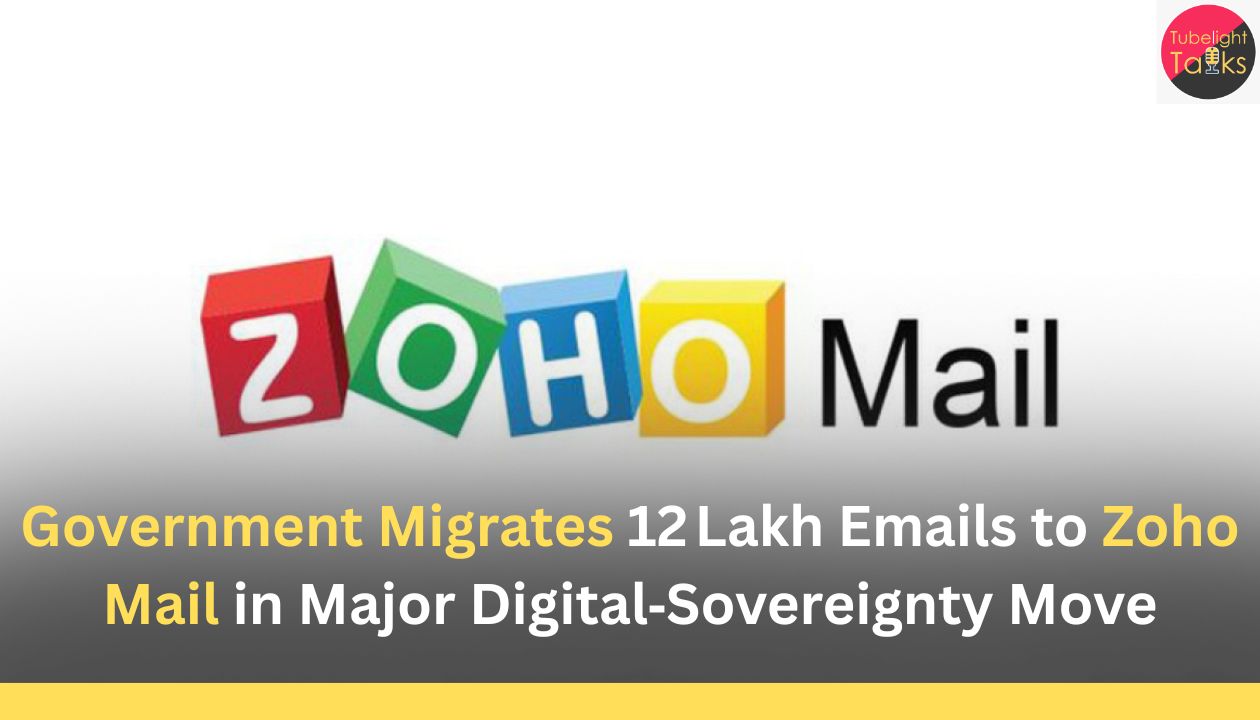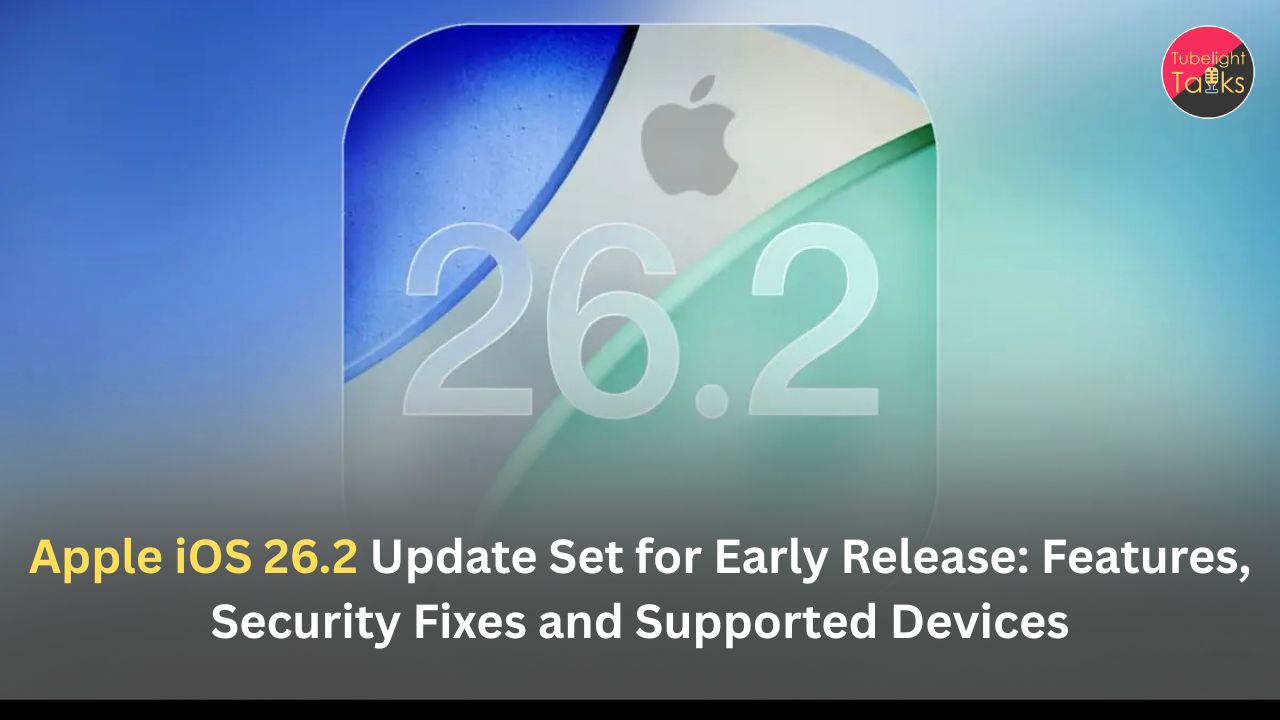Goverment Migrates 12Lakh Emails: India’s central government has initiated a large‑scale migration of official email accounts—approximately 12 lakh (1.2 million) accounts—to the domestic email platform Zoho Mail, signalling a major milestone in the country’s push for digital self‑reliance and data sovereignty.
Strategic Context
Why the Shift Matters
For years, India’s public‑sector departments and government employees have relied on global email and productivity platforms. This reliance raised concerns about foreign‑control of data, potential vulnerabilities, and strategic dependencies. The shift to Zoho Mail is a response to those concerns, aligning with the broader “Atmanirbhar Bharat” and “Make in India” ambitions.
Symbolic Endorsements
Union Home Minister Amit Shah officially posted his change of email address to Zoho Mail, declaring: “Hello everyone, I have switched to Zoho Mail. Kindly note the change in my email address…” Similarly, other ministers announced their migration, strengthening the signal.
Details of Migration & Scale
Numbers & Deployment
According to reports, the government has already migrated about 1.2 million government employee email IDs to Zoho Mail’s infrastructure.

Platform Features
Zoho Mail offers ad‑free usage, data‑centre options in India, two‑factor authentication, and heightened focus on Indian data‑residency and privacy. Business‑Standard noted that the platform’s uptake surged after government endorsements.
Migration Strategy
The move is being rolled out in phases, with government agencies, departments and PSUs gradually shifting from legacy systems (including Gmail, Microsoft Outlook) to Zoho’s environment. Reports show hundreds of thousands of accounts already set up.
Implications for Digital Infrastructure
Data‑Sovereignty and Security
By moving email infrastructure to a home‑grown platform, India strengthens its ability to retain data locally, reduce dependency on foreign platforms and reinforce national cyber‑security resilience.
Domestic Tech Ecosystem Boost
The government’s push offers a significant boost to India’s SaaS ecosystem. Zoho’s surge in registrations—150× for personal accounts and 300 % increase in paid business users—after ministerial endorsements points to larger market ripple effects.
Cost, Control & Vendor Diversification
Shifting to a domestic provider may reduce dollar‑licensing costs, increase control over infrastructure and promote competition. It also sets precedent for migrating other governmental IT services to Indian platforms.
Also Read: Indian IT Minister Endorses Zoho Corporation: A Swadeshi Leap in Digital Productivity
Key Challenges Ahead
Scale & Reliability
Migrating a million‑plus user base with minimal disruption, ensuring uptime, accessibility and legacy‑data compatibility are major operational demands.
User Experience & Adoption
Users accustomed to Gmail or Outlook may face adjustment. Training, support and full ecosystem integration (calendar, drive, mobile sync) will be critical.
Privacy & Trust
While the migration emphasizes data‑residency and sovereignty, critics point out that trust in domestic firm practices, encryption standards and potential government‑vendor convergence still need scrutiny.
Broader Ecosystem Shift
Email infrastructure is one piece; the larger goal of moving productivity suites, collaboration tools, e‑governance applications, and cloud workloads to domestic platforms remains complex and long‑term.
Ensure Empowerment, Accessibility And Mindful Development
In an era of technology dependence and global digital ecosystems, the teachings of Sant Rampal Ji Maharaj remind us that progress is meaningful only when anchored in purpose, integrity and service. Just as the government’s shift to home‑grown platforms speaks to self‑reliance, so too the satgyan philosophy talks of using one’s skills and tools to uplift humanity, preserve dignity and build lasting value. When India adopts indigenous technology, the ambition must go beyond replacing one provider with another—it must ensure empowerment, accessibility and mindful development.
What to Watch in the Coming Weeks
Migration Milestones
Which departments complete migration, how many total accounts shift and how smoothly the transition proceeds.
Service Performance Metrics
Uptime, user satisfaction, support tickets and comparative performance vs. legacy platforms.
Broader IT Ecosystem Moves
Will other government services (administrative suites, document‑management, cloud hosting) follow the indigenous conversion trend? What will be role of PSUs, state governments, education and health sectors?
Industry Response
How will Indian SaaS firms scale? What is the impact on cost‑structures, security posture and vendor diversification?
FAQs: Government’s Migration to Zoho Mail
Q1. How many email accounts have been moved?
Approximately 1.2 million (12 lakh) official government email IDs have been migrated so far.
Q2. Why is India making this switch?
The move is driven by goals of digital‑sovereignty, data‑residency, reducing foreign‑vendor dependence and promoting domestic tech innovation.
Q3. Which platform is being used?
The platform is Zoho Mail from Zoho Corporation, an Indian SaaS company.
Q4. Has any senior leader adopted this?
Yes, Union Home Minister Amit Shah officially switched to Zoho Mail and announced his new email address publicly.
Q5. What are the key challenges ahead?
Challenges include scaling user migration, ensuring service reliability, adapting user‑experience, maintaining encryption/privacy standards and shifting other digital services to domestic platforms.










